Party Walls Look Like This
 If you need help and advice with regard to disputes, particularly party walls matters, or you require a structural report or a building report or a schedule of condition or help with any other property matters please call 0800 298 5424 for a friendly chat.
If you need help and advice with regard to disputes, particularly party walls matters, or you require a structural report or a building report or a schedule of condition or help with any other property matters please call 0800 298 5424 for a friendly chat.
We think the Party Wall Etc. Act 1996 is an excellent piece of legislation.
It gives both rights to the building owner (who is normally the one carrying out the work) and the adjoining owner (who is normally the one where the work is being carried out).
There is a system of time limits for responses from 14 days to a month. It is managed by appointed Party Wall surveyors with the aid, sometimes, of a third surveyor (a quasi Judge), without, in most cases, major intervention by solicitors and lawyers therefore costs are kept to a minimum. However, your wall needs to be a party wall to get the benefits of the Party Wall Etc Act 1996.
Free phone 0800 298 5424
What does a Party Wall look like?
A surprising number of people in London have had experience in Party Walls, which in a way shouldn't be surprising as the Party Wall Act has been in existence in London for many years as well as other big cities. It was only in 1996 that it became nationwide.
Why is it so hard to know exactly where a boundary line is?
It seems very easy when deeds have lines on them to identify exactly where a boundary line is however if you scale up the thickness of a line it can itself be a metre or a few feet wide depending on which you prefer (metric or imperial). This can be so important in a high density area such as a city centre. If you are lucky the deeds may make reference to other physical objects such as trees, walls, etc or even dimensions.
Common sense Party Walls
We have what we would term as Common Sense Party Walls, which are the three types of Party Walls which are what we think most people would say if asked what a Party Wall is:
A wall that separates two buildings
Where the boundary line between the buildings runs through the wall. It doesn't have to run centrally through the wall; it just has to run through the wall (although it is very hard to define exactly where a boundary line is unless you are very lucky with Deeds and the documentation).
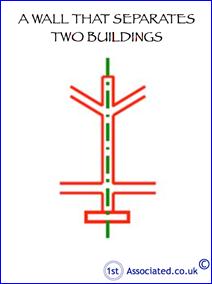
Party Wall separating two buildings or more
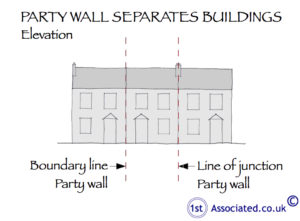
Party Wall separates two buildings
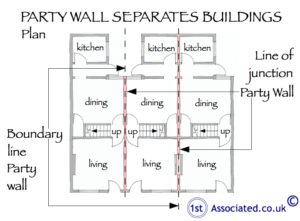
Party Wall separates two buildings
A wall that forms part of one building, which has a boundary line going through it that could be used by an adjoining neighbour.
Note that the boundary line is called a line of junction in the party wall world.
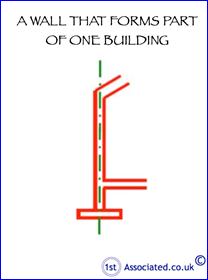
Part of one building (but could be used by a neighbouring owner)
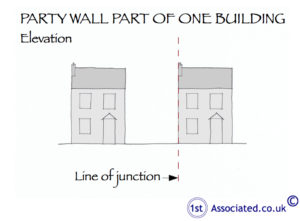
Party wall which is part of one building
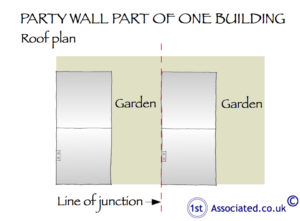
Party wall which is part of one building
A wall that isn't part of a building that sits on a boundary line known as a Party Fence
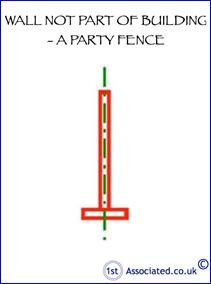
In all these cases you would have a party wall if you had a wall which fits these definitions and therefore you have the rights and benefits that the Party Wall Etc Act 1996 can give you.
You may be interested in these Party Wall articles too:
What is a Third Surveyor in Relation to Party Wall Act etc 1996?
Party Wall Basics
Time waits for no-one, be they the Building Owner or Adjoining Owner, Section 1 of Party Wall etc Act 1996
Time waits for no-one, be they the Building Owner or Adjoining Owner, Section 2 of Party Wall etc Act 1996
What is a Party Wall Notice?
The not so common sense Party Wall
The Party Walls that we have shown you so far, we believe, are relatively simple and have an element of common sense to them. The next few we would term as the Not So Common Sense Party Walls and one of them is a floor rather than a wall.
A wall that is wholly on the building owner's land but issued by adjoining owners to separate the buildings
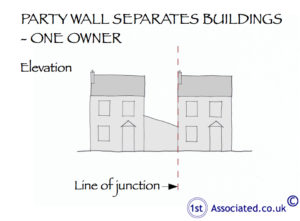 |
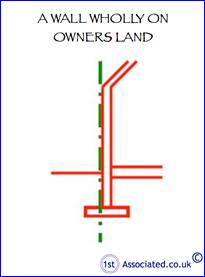 |
|
Wall wholly on owners land but is used by two (or more) owners to separate their building |
Wall wholly on owner's land but is used by two (or more) owners |
A wall or floor separating buildings, or parts of buildings, by separate stairs or entrances
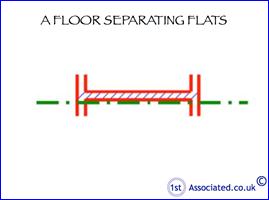 A separating floor in elevation
A separating floor in elevation
A typical example of this would be a floor within a block of flats.
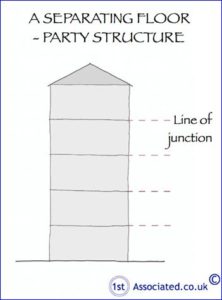 A Separating Floor - Party Structure
A Separating Floor - Party Structure
If you have one of these then you have a Party Wall and you have the rights and benefits that the Party Wall Etc Act 1996 can give you.
Independent Surveyors
If you truly do want an independent expert opinion from a building surveyor we are happy to do valuations, building surveys, structural surveys, structural reports, engineers reports, specific defects reports, home buyers reports or any other property matters. Please contact us on 0800 298 5424 to have a free of charge friendly chat with one of our surveyors.
We feel our surveys are quite unique, as they are written to your level of knowledge. The surveys include photos and sketches and definitions. The survey will also include an action required section and an estimate of costs in the executive summary. We are more than happy to meet you at the property whilst carrying out the survey to discuss any specific issues you may have or have a general chat about what we have found at the end of the survey.
Commercial Property
If you are looking for commercial property, whether it is freehold or leasehold, we would recommend a survey as this will prevent dilapidations claims in the long run. You may wish to look at our Dilapidations Website at www.DilapsHelp.com and for Disputes go to our Disputes Help site www.DisputesHelp.com , both of which we have been advised are very helpful!
We hope you found the article of use and if you have any experiences that you feel should be added to this article that would benefit others, or you feel that some of the information that we have put is wrong then please do not hesitate to contact us (we are only human).
The contents of the website are for general information only and is not intended to be relied upon for specific or general decisions. Appropriate independent professional advice should be paid for before making such a decision.
All rights are reserved the contents of the website are not to be reproduced or transmitted in any form in whole or part without the express written permission of www.1stAssociated.co.uk.
